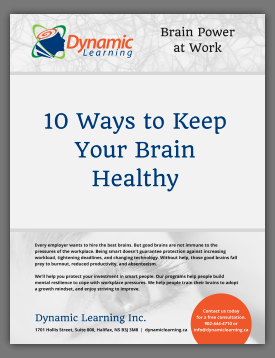Recently I watched an A Passionate Eye episode on CBC called ‘How to Stay Younger’. There are now blood tests which, by measuring the damage to your DNA, can calibrate your actual age compared to your chronological age. There were also tests of grip strength, fat to muscle ratios, heart rate during exercise, and records of diet and stress levels.
I was surprised to see volunteers in their 50’s showing actual body ages of 20, 30, and yes, even 40 years older than their chronological ages. The good news was that within three months of improving their exercise regime, eating healthy, getting enough rest, and reducing their stress, they showed remarkable improvements.
According to additional research, how quickly we age depends 25% on our genes and 75% on our lifestyle.
And how much impact does diet have? Loma Linda, California has one of the highest life expectancies in the world. Residents there are 10 times more likely to live to 100 than typical Americans. The average male in Loma Linda lives to 89, the average woman to 91 — both are ten years longer than the national average. Many residents are 7th Day Adventist who do not smoke or drink alcohol, who have a day of rest every week, and who maintain a healthy, low-fat vegetarian diet that is rich in nuts and beans.
A few years ago, I drew up a list of recommended foods I called…
The Magnificent Dozen Foods for Your Brain, Your Heart, and Your Gut
- Apples¹‚² are loaded with a bioflavonoid that helps your brain resist inflammation. The latest scientific studies confirm that inflammation is a primary “brain killer” and destroys from within.
- Leeks² are an easily available prebiotic source of inulin and fibre. Gut bacteria also love vegetables like onions and garlic².
- Beans¹‚² including kidney beans, black beans, lentils, and chickpeas³ are high in folate (a water-soluble B vitamin), which builds cells and decreases the risk of Alzheimer’s. They are also rich in protein, fibre, iron, magnesium, potassium, and zinc and are easy to include in salads, stews, curries, and soups.
- Unsweetened Greek Yogurt³ boosts tyrosine which helps the body and brain fight stress. Like unpasteurized² cheese, sauerkraut, and kefir, these fermented foods contain live bacteria that encourage microbes to produce more healthy hormones like serotonin.
- Fish¹ such as wild salmon³, trout, sardines, and mackerel provide omega-3 fatty acids which reduce inflammation and lowers blood pressure.
- Berries¹ like blueberries, strawberries, raspberries, cranberries and blackberries; these anti-oxidant filled berries help fight against aging problems, such as short-term memory loss, dopamine deficiency and inflammation.
- Nuts, including walnuts, almonds, hazelnuts, peanuts and cashews; these foods are powerhouses of monounsaturated fat, the good fat that helps to reduce LDL (bad) cholesterol. Nuts² are both heart and brain healthy.
- Broccolli¹ and similar vegetables like cabbage, cauliflower and Brussels sprouts protect against coronary artery disease and Alzheimer’s. Leafy greens³ such as spinach, collard, beet, and kale are loaded anti-oxidants which prevent plaque buildup, aiding blood flow to the brain.
- Sweet potatoes¹ are loaded with significant values of beta-carotene, vitamin C, vitamin B6, folate, potassium, phosphorus, calcium, and fibre. Sweet potatoes³ are associated with reducing the risk of cancer, suppressing tumour development, and even improving night vision.
- Soy³ products are excellent sources of plant protein that are high in polyunsaturated fats, fibre, vitamins and minerals and low in saturated fat. They¹ have the same effects as nuts, but are higher in protein and lower in fat.
- Tomatoes contain the anti-oxidant lycopene associated with better heart and memory protection. Studies show that heating tomatoes² makes lycopene more easily absorbed and utilized by the body.
- Whole grain¹ crispbreads³ or crackers like Kavli, RyKrisp, or Ryvita, containing the word whole, (not enriched, not multi-grain), and include all three parts of the grain kernel: the bran, germ, and endosperm. Some whole grain breads, some whole grain breakfast cereals, brown rice, barley, and some oatmeal are all whole grain choices. The word whole and the name of the grain should appear as one of the first four ingredients on the ingredient list of the product.
¹The Anti-Alzheimer’s Prescription by Dr. Vincent Fortanasce, M.D, New York: Gotham Books, 2008.
²Top Ten Foods for Your Gut by Tim Spector. https://www.cbc.ca/natureofthings/features/food-guru-tim-spectors-top-ten-tips-for-a-healthier-diet Explored on CBC The Nature of Things
³Ten Best Foods Nutrition Action www.nutritionaction.com NutritionAction.com is a division of the non-profit Center for Science in the Public Interest
Find Your Own Best Eating
Recent research into healthy eating shows that each of us has a unique response to food, so we have to experiment to find the combination which works best for us.
You will find a multitude of best foods which include some not on my list, like avocados and extra virgin olive oil. Summer is a great time to try new vegetables and fruit. Bon Appetit.


